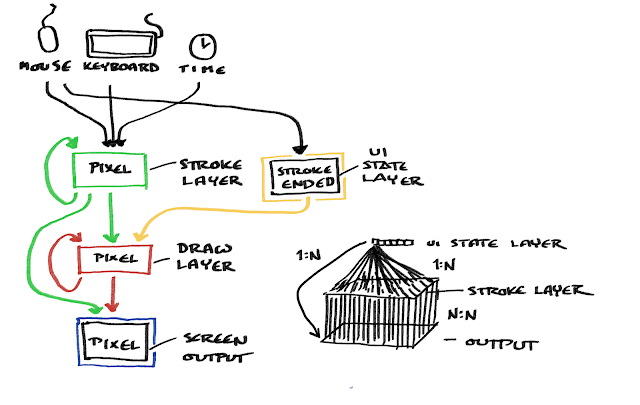
I wrote a small painting program on ShaderToy, using the new multipass rendering feature. It's called ShaderPaint and it was a lot of fun to write.
The fun part about writing programs in ShaderToy is the programming model it imposes on you. Think of it as small pixel-size chunks of memory wired together in a directed graph. Each chunk of memory runs a small program that updates its contents. The chunks are wired together so that a chunk can read in the contents of chunks that it's interested in. The read gives you the contents on the last time step, so there's no concurrent crosstalk happening.
This is... rather different. Your usual programming model is all about a single big program, executing on a CPU, reading and writing to a massive pool of memory, modifying anything, anywhere, at any time. To go from that to ShaderToy's memory-centric approach is a big shift in perspective. Instead of thinking in terms of "The program is going to do this and then it's going to do that and then it's going to increment that counter over there.", you start to think like "If the program is running on this memory location, do this. If the program is running on that memory location, do that. If the program is running on the counter's memory location, increment the value." You go from having a single megaprogram to an army of small programs, each assigned to a memory location.

In the figure above, I've sketched the data flow of an output pixel. First, the UI inputs coming from the shader uniforms modify the UI state layer, which is read by the stroke layer to draw a brush stroke on it. The stroke layer is then composited with the draw layer when the brush stroke has ended. The final step is to composite the stroke layer and draw layer onto the output canvas, and draw the UI controls on it, based on the values on the UI state layer.
No comments:
Post a Comment